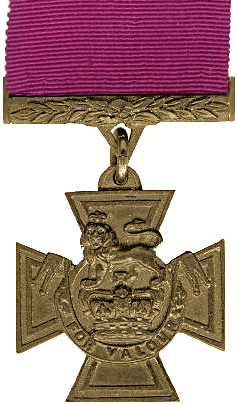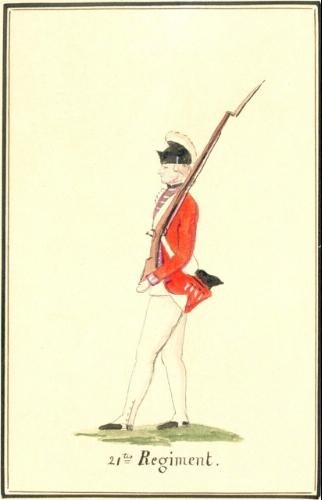|
John Campbell, 5th Duke Of Argyll
Field Marshal John Campbell, 5th Duke of Argyll (June 1723 – 24 May 1806), styled Marquess of Lorne from 1761 to 1770, was a Scottish soldier and nobleman. After serving as a junior officer in Flanders during the War of the Austrian Succession, he was given command of a regiment and was redeployed to Scotland where he opposed the Jacobites at Loch Fyne at an early stage of the Jacobite Rebellion and went on to fight against them at the Battle of Falkirk Muir and then at the Battle of Culloden. He later became adjutant-general in Ireland and spent some 20 years as a Member of Parliament before retiring to Inveraray Castle. Military career Born the son of John Campbell, 4th Duke of Argyll and Mary Campbell (née Bellenden), the daughter of John Bellenden, 2nd Lord Bellenden of Broughton, Campbell was educated at a private school in London and commissioned as second lieutenant in the 21st Royal Scots Fusiliers in 1739. He was promoted to captain in 1741 and major in ... [...More Info...] [...Related Items...] OR: [Wikipedia] [Google] [Baidu] |
Field Marshal (United Kingdom)
Field marshal (FM) has been the highest rank in the British Army since 1736. A five-star rank with NATO code OF-10, it is equivalent to an Admiral of the Fleet (Royal Navy), Admiral of the Fleet in the Royal Navy or a Marshal of the Royal Air Force in the Royal Air Force (RAF). A Field Marshal's insignia consists of two crossed batons surrounded by yellow leaves below Tudor Crown (heraldry), the Tudor Crown. Like Marshals of the Royal Air Force and Admirals of the Fleet, Field Marshals traditionally remain officers for life, though on half-pay when not in an appointment or retired. The rank has been used sporadically throughout its history, and was vacant during parts of the 18th and 19th centuries (when all former holders of the rank were deceased). After the Second World War, it became standard practice to appoint the Chief of the General Staff (United Kingdom), Chief of the Imperial General Staff (later renamed Chief of the General Staff (United Kingdom), Chief of the Gen ... [...More Info...] [...Related Items...] OR: [Wikipedia] [Google] [Baidu] |
Battle Of Culloden
The Battle of Culloden took place on 16 April 1746, near Inverness in the Scottish Highlands. A Jacobite army under Charles Edward Stuart was decisively defeated by a British government force commanded by the Duke of Cumberland, thereby ending the Jacobite rising of 1745. Charles landed in Scotland in July 1745, seeking to restore his father James Francis Edward Stuart to the British throne. He quickly won control of large parts of Scotland, and an invasion of England reached as far south as Derby before being forced to turn back. However, by April 1746, the Jacobites were short of supplies, facing a superior and better equipped opponent. Charles and his senior officers decided their only option was to stand and fight. When the two armies met at Culloden, the battle was brief, lasting less than an hour, with the Jacobites suffering an overwhelming and bloody defeat. This effectively ended both the 1745 rising, and Jacobitism as a significant element in British politics. Ba ... [...More Info...] [...Related Items...] OR: [Wikipedia] [Google] [Baidu] |
Clyde Burghs (UK Parliament Constituency)
Clyde Burghs, also known as Glasgow Burghs, was a district of burghs constituency of the House of Commons of Great Britain (at Westminster) from 1708 to 1801 and of the House of Commons of the United Kingdom (also at Westminster) from 1801 to 1832. It elected one Member of Parliament (MP). Creation The British parliamentary constituency was created in 1708 following the Acts of Union, 1707 and replaced the former Parliament of Scotland burgh constituencies of Glasgow, Dumbarton, Renfrew and Rutherglen. Boundaries The constituency consisted of parliamentary burghs along the River Clyde and the Firth of Clyde: Dumbarton in the county of Dumbarton, Glasgow and Rutherglen in the county of Lanark, and Renfrew in the county of Renfrew. History The constituency elected one Member of Parliament (MP) by the first past the post First-past-the-post (FPTP)—also called choose-one, first-preference plurality (FPP), or simply plurality—is a single-winner voting rule. V ... [...More Info...] [...Related Items...] OR: [Wikipedia] [Google] [Baidu] |
Major (rank)
Major is a senior military Officer (armed forces), officer military rank, rank used in many countries. When used unhyphenated and in conjunction with no other indicators, major is one rank above Captain (land), captain in armies and air forces, and one rank below lieutenant colonel. It is considered the most junior of the senior officer ranks. Background Etymologically, the word stems from the Latin word meaning "greater". The rank can be traced back to the rank of sergeant major general, which was shortened to sergeant major, and subsequently shortened to ''major''. When used in hyphenated or combined fashion, the term can also imply seniority at other levels of rank, including major general, denoting a low-level general officer, and sergeant major, denoting the most senior non-commissioned officer (NCO) of a military unit. The term major can also be used with a hyphen to denote the leader of a military band such as in Pipe-Major, pipe-major or drum-major. Links to major ... [...More Info...] [...Related Items...] OR: [Wikipedia] [Google] [Baidu] |
Captain (British Army And Royal Marines)
Captain (Capt) is a junior officer rank of the British Army and Royal Marines and in both services it ranks above Lieutenant (British Army and Royal Marines), lieutenant and below Major (United Kingdom), major with a NATO ranking code of OF-2. The rank is equivalent to a Lieutenant (British Army and Royal Marines), lieutenant in the Royal Navy and to a flight lieutenant in the Royal Air Force. The rank of Captain (Royal Navy), captain in the Royal Navy is considerably more senior (equivalent to the Army/RM rank of colonel) and the two ranks should not be confused. In the 21st-century British Army, captains are often appointed to be second-in-command (2IC) of a Company (military unit), company or equivalent sized unit of up to 120 soldiers. History A rank of second captain existed in the Ordnance at the time of the Battle of Waterloo. From 1 April 1918 to 31 July 1919, the Royal Air Force maintained the junior officer rank of captain. RAF captains had a rank insignia based on ... [...More Info...] [...Related Items...] OR: [Wikipedia] [Google] [Baidu] |
Royal Scots Fusiliers
The Royal Scots Fusiliers was a line infantry regiment of the British Army that existed from 1678 until 1959 when it was amalgamated with the Highland Light Infantry (City of Glasgow Regiment) to form the Royal Highland Fusiliers (Princess Margaret's Own Glasgow and Ayrshire Regiment) which was later itself merged with the Royal Scots, King's Own Scottish Borderers, the Black Watch (Royal Highland Regiment), the Argyll and Sutherland Highlanders and the Highlanders (Seaforth, Gordons and Camerons) to form a new large regiment, the Royal Regiment of Scotland. History Naming Conventions In the late 17th century, many English and Scottish politicians viewed standing armies or permanent units as a danger to the liberties of the individual and a threat to society itself. The experience of the Wars of the Three Kingdoms and the use of troops by both the Protectorate and James VII and II to repress political dissent created strong resistance to permanent units owing allegiance ... [...More Info...] [...Related Items...] OR: [Wikipedia] [Google] [Baidu] |
Officer (armed Forces)
An officer is a person who holds a position of authority as a member of an Military, armed force or Uniformed services, uniformed service. Broadly speaking, "officer" means a commissioned officer, a non-commissioned officer (NCO), or a warrant officer. However, absent contextual qualification, the term typically refers only to a force's ''commissioned officers'', the more senior members who derive their authority from a Commission (document), commission from the head of state. Numbers The proportion of officers varies greatly. Commissioned officers typically make up between an eighth and a fifth of modern armed forces personnel. In 2013, officers were the senior 17% of the British armed forces, and the senior 13.7% of the French armed forces. In 2012, officers made up about 18% of the German armed forces, and about 17.2% of the United States armed forces. Historically armed forces have generally had much lower proportions of officers. During the First World War, fewer than ... [...More Info...] [...Related Items...] OR: [Wikipedia] [Google] [Baidu] |
London
London is the Capital city, capital and List of urban areas in the United Kingdom, largest city of both England and the United Kingdom, with a population of in . London metropolitan area, Its wider metropolitan area is the largest in Western Europe, with a population of 14.9 million. London stands on the River Thames in southeast England, at the head of a tidal estuary down to the North Sea, and has been a major settlement for nearly 2,000 years. Its ancient core and financial centre, the City of London, was founded by the Roman Empire, Romans as Londinium and has retained its medieval boundaries. The City of Westminster, to the west of the City of London, has been the centuries-long host of Government of the United Kingdom, the national government and Parliament of the United Kingdom, parliament. London grew rapidly 19th-century London, in the 19th century, becoming the world's List of largest cities throughout history, largest city at the time. Since the 19th cen ... [...More Info...] [...Related Items...] OR: [Wikipedia] [Google] [Baidu] |
John Bellenden, 2nd Lord Bellenden
John Bellenden, 2nd Lord Bellenden (died March 1707) was a Scottish nobleman. Early life Born John Ker, he was the fourth son of William Ker, 2nd Earl of Roxburghe (born William Drummond) and the Hon. Jane Ker. Among his elder brothers was Robert Ker, 3rd Earl of Roxburghe (who married Lady Margaret Hay, eldest daughter of John Hay, 1st Marquess of Tweeddale) and William Ker, who served as Sheriff of Tweeddale. His younger sister, Lady Jean Ker, was married to Colin Lindsay, 3rd Earl of Balcarres, a prominent supporter of James II of England. His parents were first cousins as his mother was the eldest daughter, and heir of line, of the Hon. Harry Ker (from his great-grandfather's second marriage to Jean Drummond, who was also his paternal grandfather's younger sister). His maternal grandmother was Lady Margaret Hay, the only daughter of William Hay, 10th Earl of Erroll and Lady Anne Lyon (daughter of Patrick Lyon, 1st Earl of Kinghorne). After his grandfather died, Lady Mar ... [...More Info...] [...Related Items...] OR: [Wikipedia] [Google] [Baidu] |
Mary Campbell Of Mamore
Mary Campbell of Mamore born Mary Bellenden (baptised 1685 – 1736) was a Scottish aristocrat who was a maid of honour to Caroline of Ansbach. She was rumoured to have had an affair with her husband the Prince of Wales, but she married his groom of the bedchamber John Campbell of Momore (later the Duke of Argyll). Life She was one of the seven children of Lady Mary Ramsay, Countess Dowager of Dalhousie and her second husband John Drummond Bellenden, 2nd Lord Bellenden of Broughton. She was their third daughter and she was baptised in Edinburgh on 4 May 1685. She had an advantageous friendship with Mary Ker who was the wife of her cousin ( John Ker, 1st Duke of Roxburghe) and Mary Ker proposed to Caroline of Ansbach (the Princess of Wales) that Mary should become her maid of honour. Court life had become more entertaining with the new Prince and Princess of Wales and Mary had significant admirers. Lord Hervey and Horace Walpole were on record for admiring her charms. The po ... [...More Info...] [...Related Items...] OR: [Wikipedia] [Google] [Baidu] |





